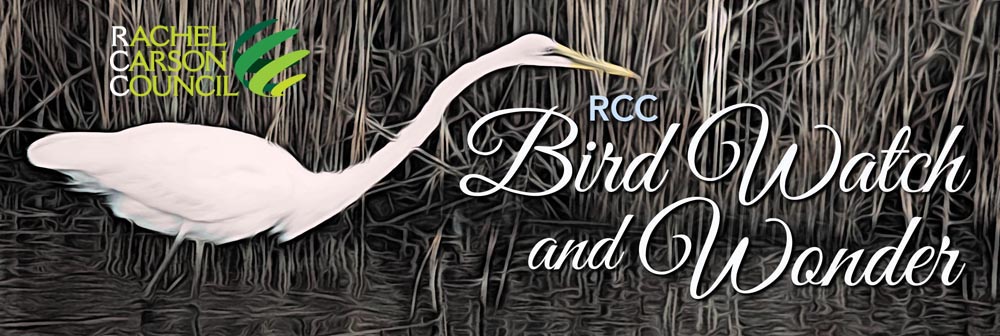 | | | Perhaps November’s biggest surprise was the mid-term election that saw near record youth turnout and the best performance by a newly-elected President’s party (pro-environment and pro-bird Democrats) in an off-year since the days of JFK. A rare event! 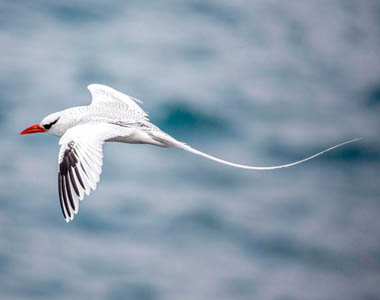 Rare birding opportunities are also a feature of November which is known as “rarity season” since the opportunity during migration to see unusual birds when they are blown off course increases. Such potential lifers who have gotten off track may show up in your area, so keep a keen watch, making use of this cool period to get outside. Not only will you have fun, but birding, it turns out, is actually good for your mental health. Check out our “Action and Advocacy” section to find out just how birding benefits your mental health and get some tips on how to start! Rare birding opportunities are also a feature of November which is known as “rarity season” since the opportunity during migration to see unusual birds when they are blown off course increases. Such potential lifers who have gotten off track may show up in your area, so keep a keen watch, making use of this cool period to get outside. Not only will you have fun, but birding, it turns out, is actually good for your mental health. Check out our “Action and Advocacy” section to find out just how birding benefits your mental health and get some tips on how to start!
That should help as you also review in “Action and Advocacy,” a new U.S. State of the Birds report. It details the declining populations of many bird species, and outlines what needs to be done to help. Part of the decline is related to climate change such as unprecedented droughts occurring throughout the country, particularly in Kansas, where bird migration is being hindered. You can learn more about it in the “Bird Ecology” section. Fortunately, many birds live for a very long time. Discover why birds can live such long lives and how they survive their tumultuous lifestyles in “Bird Findings.” 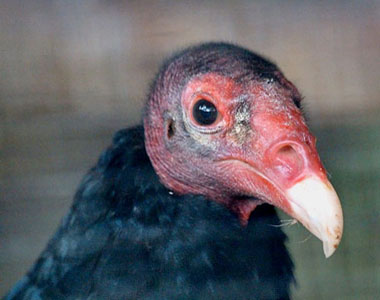 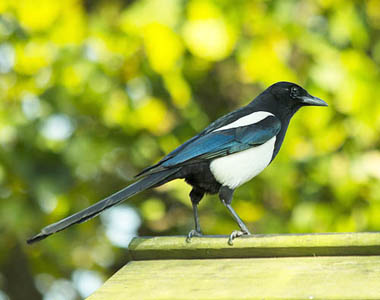 But, fortunately, even in the face of contentious elections, climate change, and habitat loss, birds not only survive, they continue to brighten our lives. And that includes vultures! In “Bird Lore,” you’ll want to read Ross Feldner’s latest offbeat offering, in effect, an ode to vultures. And there, you’ll also find my own exploration of a lifelong fascination with bird names – since I seem to have been named after one! But, fortunately, even in the face of contentious elections, climate change, and habitat loss, birds not only survive, they continue to brighten our lives. And that includes vultures! In “Bird Lore,” you’ll want to read Ross Feldner’s latest offbeat offering, in effect, an ode to vultures. And there, you’ll also find my own exploration of a lifelong fascination with bird names – since I seem to have been named after one!
Then, to further keep your mental health on track, check out the latest in bird art, including luscious photography. Then, finish up in “Books” with our recommendation of a new novel, Conversations with Birds, by novelist and documentary filmmaker, Priyanka Kumar. Kumar details how she has fostered her connection with the environment through building relationships with birds as she moved from India to urban Los Angeles. | | | | | | | |
RCC Stanback Presidential Fellow – Maggie Dees
 Maggie Dees co-leads the RCC Bird Watch and Wonder program. She is a sophomore in the honors program at Virginia Tech University majoring in environmental science. She is from Salisbury, NC, and is passionate about environmental justice and conservation. Maggie Dees co-leads the RCC Bird Watch and Wonder program. She is a sophomore in the honors program at Virginia Tech University majoring in environmental science. She is from Salisbury, NC, and is passionate about environmental justice and conservation. | | | | | | | | Seeing or Hearing Birds Is Good for
Well-Being Positive effects of being around birds can last for 8 hours Listening to birds trill or watching them flit and fly is more than just entertaining. Being around birds offers benefits for emotional well-being that can last as long as eight hours, a new study finds. Researchers used a phone application to collect information on how this specific nature exposure could be good for mental wellness. | | | | | | | | Crows Perform Yet Another Skill Once Thought Distinctively Human Scientists demonstrate that crows are capable of recursion—a key feature in grammar. Not everyone is convinced. Crows are some of the smartest creatures in the animal kingdom. They are capable of making rule-guided decisions and of creating and using tools. They also appear to show an innate sense of what numbers are. Researchers now report that these clever birds are able to understand recursion—the process of embedding structures in other, similar structures—which was long thought to be a uniquely human ability. | | | | | | How an American Bird Became an Overnight Superstar in Britain These are hard times in Britain, but it's not all bad. In one of the most remote parts of the British Isles, a visitor from America became an overnight superstar, attracting fans from far and wide. The British are going through hard times. The queen died. Their economy is a mess. They've had three prime ministers in as many months. But it's not all gloom and doom. NPR's Philip Reeves traveled to a remote part of the British Isles to learn about a recent incident that made some Brits rather happy. | | | | | | Why Birds Are Anti-Aging Superstars Despite their extreme lifestyles, avians can live remarkably long lives for animals their size. Wisdom the Laysan Albatross celebrated a big birthday last year, turning a whopping 70 years old. Flying for months at a time over the open sea, albatrosses’ bodies are built to last, and as far as we know, she is the oldest wild bird in the world. However, the reason for Wisdom's extraordinarily long life—even living longer than the biologist who first banded her—remains a mystery. | | | | | | | | 'Divorce' Rates Are Higher in Birds That Travel Long Distances Break-ups are more common in bird species with longer migrations, probably because partners return home at different times and don’t wait for each other to breed. Birds that migrate long distances tend to be more likely than others to break up with their partner, according to an analysis of 232 species. About 90 per cent of bird species are socially monogamous, meaning they form couples that primarily breed with each other and raise offspring together. Some of these couples stay together for life, while others end up getting “divorced” and moving onto new partners. | | | | | | Climate Reshapes Life For Tenacious Gannets on Quebec Isle On Quebec’s Bonaventure Island, the ghosts of human habitation from years past and the birds that breed there now in extraordinary numbers tell the same story: of lives lived hard in a place of fairy-tale beauty. You see this from the tender ages on the family gravestones of islanders who scratched out a living from the late 1700s to when Bonaventure went entirely to the birds a half century ago. | | | | | | | | Some NU Students Are Literally For
the Birds Northwestern University students don’t just study. They participate in multiple service opportunities. Probably their best-known charitable activity is Dance Marathon, which since 1975 has raised more than $22 million, primarily for local children and the Evanston Community Foundation. Now a new student initiative is focusing not on local residents but on migrating birds that travel through the Northwestern campus. | | | | | | Antidotes for Ecological Forgetfulness Bear witness, make a record, pass it on. Jason Mark, High Country News The disappearances are almost everywhere, so they are difficult to discern. Since the 1970s, the populations of many of the most common North American birds have plummeted. The number of western meadowlarks has decreased by 37%, and grasslands in general have lost an estimated 720 million birds. Populations of piñon jays — one of the signature birds of the Western piñon-juniper landscape — are down a stunning 85%. | | | | | | | | Vultures Don’t Get No Respect In the United States there are two fairly common species of vulture that are members of the raptor family, the Black Vulture, and the Turkey Vulture. Like the popular standup comic Rodney Dangerfield’s famous catch phrase, “I don’t get no respect,” these essential scavengers are often shunned by humans, considered unattractive, and viewed negatively in folklore and mythology. Some Native American tribes consider them unclean and symbols of death. A common perception of vultures is that when seen flying overhead, it’s an omen of danger or death. | | | | | | What’s In a Name I grew up with the name of a bird. I often wondered if my parents named me “Maggie” with the intention of calling me “Magpie” instead. I never really wondered what the nickname meant or why the bird and I shared it. Little did I know that the bird was named after me. “Mag” is derived from “Margaret” which was often associated with someone who was constantly chattering. That association rings true for me and the bird, me being bossy and loud as a child; the Magpie being known as a constantly chirping nuisance. There are layers of meaning behind the names we casually throw around when we see birds. | | | | | | The Day We Didn’t Save the Starling In our rescue attempt, I thought I was giving my young daughters a lesson in compassion. It ended up being the reminder that I needed. She thought it was goo. That’s what my 5-year-old said later about noticing the little pink-and-gray heap on the ground as we walked home from the park. I was in a hurry; it was lunchtime and starting to sprinkle. But I turned back with my 2-year-old to see what my older daughter, calling to me from the driveway of a blue house, had found. | | | | | | | | | | Running with Birds: Tufted Titmice Live Here Year-Round. They Are Prepping For Winter Now by Hiding Seeds and Gorging on Nuts If you are running through the forest in November, and you hear a bird calling “seet seet seet, wop,” look overhead and see if you can spot the silhouette of a bird with a crest on its head. If you happen to be running with a tuning fork in your pocket, check the key of the call, and you will notice that it is in A minor. Their other song is “Peter, Peter,” also in A minor, from E to C. The tufted titmice are busy singing, warning, and caching seeds for the winter. | | | | | | | | Dry Year Creates Perfect Storm For Migrating Birds Pull off Kansas 156 in Barton County during a wet year, and it might feel like you took a wrong turn into Florida. This part of central Kansas is home to the largest interior wetlands in the country: Cheyenne Bottoms. It can hold nearly 10 billion gallons of water. But after months of intense drought, the amount of water in these wetlands today likely couldn’t fill a Dixie cup. “We are 100% dry. There’s no water on the property,” Cheyenne Bottoms’ wildlife area manager Jason Wagner said. “This year is kind of the perfect storm.” | | | | | | Birds of Great Salt Lake’s South Arm Ecosystem Threatened As Gilbert Bay’s water level declines and salinity levels rise, what birds are at risk? For the second year in a row, Great Salt Lake reached new historic low levels. The lake receives its water from several rivers and precipitation, but as long-term drought, increasing water usage, and the reality of climate change set in, less water is coming to Great Salt Lake. This results in higher concentration of salts. While organisms of Great Salt Lake’s South Arm Ecosystem (Gilbert Bay) have evolved to tolerate higher levels of salinity than most, they do have limits. | | | | | |  | | | The Birdhouse Designs That Are Best
for Birds Here’s the problem every gardener with a well-loved plot faces sooner or later: When does adding one more thing cause the design to descend into chaos? We’ve all seen gardens like that—too many statues, windmills, wind chimes, wind socks, lollipop topiaries, ceramic toadstools, garden gnomes, a “water feature” or two, and one of those reflective balls on a pedestal. It’s not that we’re monsters. Many of us start out simply, trying to create our own little Garden of Eden. | | | | | | Local Writer/Photographer Publishes Collection on Region’s Birds In 2016 Bud Simpson, now a weekly columnist for The Logan Daily News, published a volume of his wild bird photographs called “Nature’s Way: Birds of the Hills Vol. 1.” At that time he had already brought out a photo collection devoted to the Great Blue Heron, and another on the Mute Swans of Lake Logan. Now six years later Simpson has given us “Birds of the Hills Vol. 2.” And while the photos in the first collection were striking and colorful, the shots in the new book are even better. | | | | | | | | | | In ‘Conversations With Birds,’ Priyanka Kumar
Captures the Ways That We Are Part of Nature For years, Kumar felt lost amidst the sea of big cities until she built a profound connection with birds. 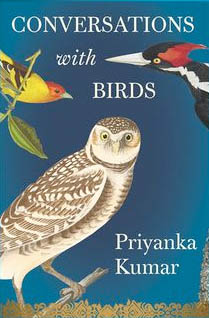 Novelist and documentary filmmaker Priyanka Kumar was born and raised in India until she moved to California as an adolescent. As she grew into adulthood, she lived in major cities across the U.S., but Kumar always felt lost and disconnected in ways she couldn’t pin down. She was prompted by a near-death experience after encountering a western tanager, and her profound love and connection with land and nature began to reawaken. So, in her new book of essays, Conversations With Birds, Kumar chronicles the deeply entwined and fulfilling relationship she had with the mountains and bamboo forests of her childhood as formative for her sense of self and her place in the world. Novelist and documentary filmmaker Priyanka Kumar was born and raised in India until she moved to California as an adolescent. As she grew into adulthood, she lived in major cities across the U.S., but Kumar always felt lost and disconnected in ways she couldn’t pin down. She was prompted by a near-death experience after encountering a western tanager, and her profound love and connection with land and nature began to reawaken. So, in her new book of essays, Conversations With Birds, Kumar chronicles the deeply entwined and fulfilling relationship she had with the mountains and bamboo forests of her childhood as formative for her sense of self and her place in the world.
 Conversations With Birds consists of Kumar’s observations, insights, and engagement with birds and the earth in prose that feels like a gentle guide for the reader to nurture their own relationship with nature, whatever it may look like. Especially as climate change claims more of what we know and love about this planet, Kumar’s writing is one of many reminders of what we have to lose, and what we must save. Conversations With Birds consists of Kumar’s observations, insights, and engagement with birds and the earth in prose that feels like a gentle guide for the reader to nurture their own relationship with nature, whatever it may look like. Especially as climate change claims more of what we know and love about this planet, Kumar’s writing is one of many reminders of what we have to lose, and what we must save.
Shondaland spoke with Kumar about conversation as a guiding word, climate grief, getting closer to the natural world, and the Hindu idea of rasa. Read more | | | | | | The November 2022 issue of Bird Watch and Wonder was produced by RCC Stanback Presidential Fellow Maggie Dees and Ross Feldner. | | | | | |  The Rachel Carson Council Depends on Tax-deductible Gifts From Concerned Individuals Like You. Please Help If You can. The Rachel Carson Council Depends on Tax-deductible Gifts From Concerned Individuals Like You. Please Help If You can. | | | |  Sign Up Here to Receive the RCC E-News and Other RCC Newsletters, Information and Alerts. Sign Up Here to Receive the RCC E-News and Other RCC Newsletters, Information and Alerts. | | | | | | | | | | | |